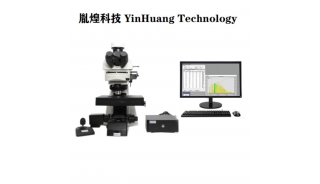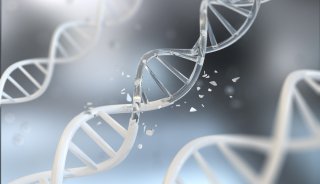高通量测序技术的原理及各平台优势和实践应用的分析 6
应用
WGS正在成为NGS中最广泛的应用。通过该技术并且结合生物学应用,研究人员可以获得基因组信息中最值得注意的信息73。举例来说,2012年,Ellis等报道了基因与乳腺癌患者芳香酶抑制剂(aromatase
inhibitor)治疗法之间的关联。他们指出突变,后果与诊断之间的关联,同样还有癌症相关基因的突变的富集。这提供了一个可能性,即:乳腺癌有不同的突变造成不同的表型,具有复杂的病理学75。最近的NGS平台的改进使得研究人员发现了一些几年前难以想象的新观点与机会。在2010年,1000基因组计划(1000
genomes
project)开放了其从179个个体中获得的WGS原始数据以及697个个体的测序数据76。到2015年,研究人员已经构建了26个不同人群的2504个人的基因组群体77,78。给人们从种群的角度来观察人类的变异。但这还不是该项目的终点,越来越多的人的基因组正在被得以测序79-81。种群水平的测序已经成为人们更好的理解人类疾病的一个重要的工具,同样也得到了意想不到的结果。一个例子是,Sidore等82对2120个撒丁岛人(Sardinians)的WGS研究发现了一些新的和脂肪相关的基因以及炎症的标志物,给人们对血液胆固醇的分子机制的研究提供了新思路。
全外显子组测序(Whole-exome
and targeted
sequencing)83同样也广泛应用于测序的研究中。受制于基因组材料大小的局限,很更多的个人样本可以在一个测序中实现,增加了基因组研究的宽度以及深度。使用外显子测序,Iossifov84等对超过2500个单一的家庭进行测序,每个家庭都有一个小孩患有自闭症(autism
spectrum disorder, ASD)。研究人员在30%的样本中发现了错意突变(missense
mutations),基因干扰的突变(gene-disrupting
mutations)以及拷贝数的变异。该工作与其他的工作一道鉴定到了ASD相关的基因突变85,86。其他证据表明,高覆盖度的WGS也可以解决复杂的变异以及临床样本的分析。2015年,Griffith等认为可以使用一个完美的跨平台的方法(包含靶向测序)来鉴定肿瘤中高可信度的SNPs。该方法中,作者认为10000×的覆盖度可以鉴定到稀有突变。由于10000×的覆盖度对于WGS而言实在过高,靶向测序便在临床中得到了广泛的应用。
NGS同样在基因的调控研究中有广泛的应用。蛋白-DNA互作可以通过染色质免疫共沉淀结合NGS测序(ChIP-seq)来得以研究41。利用NGS对修饰碱基的研究也是可行的。举例来说,甲基化测序包含了甲基化DNA的捕获与富集88,对甲基化与非甲基化区段的选择性消化89,90,91。但是,尽管利用此方法获得了很多重大的发现,修饰与捕获过程成为其最大的限制。2010年,Flusberg等92发表了一个概念性的研究方法,即:使用PacBio来区分甲基化与非甲基化的碱基。由于聚合酶即便是甲基化的碱基也能够延伸,但在甲基化位点上会停留更多的时间,因此这里改变的信号可以认为含有甲基化修饰。与之相同的是,nanopore平台也能够监测修饰的碱基,因为甲基化同样会影响鉴定到的电压的变化。这使得甲基化的测序可以在不需要化学操作的条件下进行93。
一个最近的NGS的范例是对长链DNA的测序。重复序列以及复合序列长久以来较难以拼接,短读长测序很难解决这个问题94-96。最近,Chaisson等97对长读长测序的使用使得其能够在人类GRCh37数据库中提交超过1Mb的新的序列,这些序列弥补甚至跨越了曾经的沟。Chaisson等还鉴定到了大于26000个超过50bp的indels,也因此,GRCh37数据库成为最有参考价值的几个基因组之一。除了简单的增加基因组数据可靠性之外,长读长还能够提供更有效的临床诊断98-100。
在对转录水平上的研究也因为NGS受益匪浅。今天,研究人员甚至能够使用NGS的深度测序对单个转录本进行研究。2014年,Treutlein等101使用了组织发育过程中不同细胞类群的单细胞RNA测序发现了用于鉴定细胞亚群的标志物。尽管长读长测序相对而言在对转录本的定量上不占优势,但是,长读长可以在研究转录组的结构上有所帮助51。举例来说,最近的人类长读长转录组测序研究表明
>10%的reads是新的可变剪切体102。
NGS最新的设备——nanopore测序仪,依然在寻找其定位的过程中。然而,研究人员正在将其快速的文库制备,实时的数据生产以及小的体积的优势转变为资本过程中。最近,英国Stanley
Royd Hospital的研究人员使用MinION用于监测沙门氏菌(Salmonella
enterica)的爆发103。MinION测序仪最令人振奋的应用可能就是2014年的埃博拉病毒爆发104。在位于日内瓦的欧洲移动实验室的主持下,作者对埃博拉病毒的传播以及进化历史进行了深入的研究。
结尾
我们正处在新的NGS技术革命的顶端。NGS现在已经不仅仅只是一个新奇的事物,而已经成为了一个在生物学研究中广泛应用的技术。最新的超高通量测序仪已经将曾经认为不可能的事情成为可能。这包含了首创的精准医疗(medicine
initiatives)以及Illumina计划的对循环肿瘤DNA(circulating tumour DNA,
ctDNA)进行测序。每个计划都对数万个基因组样本进行测序。所以,快速以及低成本的测序给予了内科医生强大的工具来翻译基因组信息成为有用的临床诊断结果。
这个革命也带来了新的挑战。由于NGS旨在广泛的应用于临床,时间就成为一个NGS首先需要面对的挑战。对于那些严重的神经性疾病或者极为危险的癌症患者而言,数周的WGS分析的等待时间足以使的患者错过最佳的治疗时间。对于急性感染而言,这些事件已经下降到几天。尽管人们已经对时间做出了巨大的改进,但是绝大多数现有的系统都不能完全满足快速模式下的足够产出。
虽然临床诊断面临着数据量不够的问题,NGS其他方面的应用却面临着生产力过剩的境地。目前,已有超过14000个基因组序列上传到US
National Center for Biotechnology
Information(NCBI)中。2013年,Schatz与Langmead报道了全世界每年可以生产超过15pb的数据量,并且数量与通量依然在继续增加107。数据量的富余对分析以及其下游提出了严峻的挑战,这需要革命性的存储与生信解决方案108。将海量的数据量翻译成有生物学与遗传学内涵的结果同样也是一个挑战87,109,110。在临床诊断方面,通过NGS分析的数据产生的假阳性或者假阴性同样也是需要慎重考虑的问题111,112。
最近,Illumina由于NGS与其周边产品获得了巨大的成功。其它生产商也在快速革新自身的产品113。Illumina的市场仍然在增长,以至于优势巨大。BGISEQ-500以及Helicos
technology的GenoCare114在亚洲也有所斩获。ONT PromethION115与Illumina HiSeq
X系列则向着成本与产量的极限大步迈进。随着人们对临床诊断测序兴趣的增加,已有的NGS供应商正在提供各种快速的解决方案,如Ion Torrent
S5以及Illumina的MiniSeq,还有新加入者Qiagen的GeneReader也来参与竞争。
今后的几年里,更多的玩家也会带着心得解决方案进入这个市场。GenapSys
(Sigma-Aldrich)的electronic ‘lunchbox’-sized sequencer116; Genia
(Roche)的新的nanopore测序方案117;
以及单通道CMOS技术118,都号称能够在临床应用上节约足够的时间。这些已有的和新的搅局者都有着科技革命的潜质,包括直接对RNA或者蛋白进行测序等,这些最近和未来的进步使得今天成为NGS发展的黄金时期。
参考文献
1. Watson, J. D. & Crick, F. H. The structure of DNA. Cold Spring Harb. Symp. Quant. Biol. 18, 123–131 (1953).
2. Mardis, E. R. Next-generation sequencing platforms. Annu. Rev. Anal. Chem. (Palo Alto Calif.) 6, 287–303 (2013).
This article provides a concise description of technological advancements supporting NGS.
3.
Wetterstrand, K. A. DNA sequencing costs: data from the NHGRI Genome
Sequencing Program (GSP). National Human Genome Research Institute
[online], http://www.genome.gov/sequencingcosts (updated 15 Jan 2016).
4. Kircher, M. & Kelso, J. High-throughput DNA sequencing — concepts and limitations. Bioessays 32, 524–536 (2010).
5.
Veritas Genetics. Veritas genetics launches $999 whole genome and sets
new standard for genetic testing — Press Release. Veritas Genetics
[online], https:// www.veritasgenetics.com/documents/VG-launches-999-
whole-genome.pdf (updated 4 Mar 2016).
6. Veritas Genetics. Veritas
genetics breaks $1,000 whole genome barrier — Press Release. Veritas
Genetics [online], https://www.veritasgenetics.com/documents/
VG-PGP-Announcement-Final.pdf (29 Sep 2015).
7. Liu, L. et al. Comparison of next-generation sequencing systems. J. Biomed. Biotechnol. 2012, 251364 (2012).
8. Dressman, D., Yan, H., Traverso, G., Kinzler, K. W. & Vogelstein, B. Transforming single DNA molecules
into
fluorescent magnetic particles for detection and enumeration of genetic
variations. Proc. Natl Acad. Sci. USA 100, 8817–8822 (2003).
9. Shendure, J. et al. Accurate multiplex polony sequencing of an evolved bacterial genome. Science 309, 1728–1732 (2005).
10.
Kim, J. B. et al. Polony multiplex analysis of gene expression (PMAGE)
in mouse hypertrophic cardiomyopathy. Science 316, 1481–1484 (2007).
11.
Leamon, J. H. et al. A massively parallel PicoTiterPlate based platform
for discrete picoliter-scale polymerase chain reactions.
Electrophoresis 24, 3769–3777 (2003).
12. Fedurco, M., Romieu, A.,
Williams, S., Lawrence, I. & Turcatti, G. BTA, a novel reagent for
DNA attachment on glass and efficient generation of solid-phase
amplified DNA colonies. Nucleic Acids Res. 34, e22 (2006).
13. Harris, T. D. et al. Single-molecule DNA sequencing of a viral genome. Science 320, 106–109 (2008).
14.
Drmanac, R. et al. Human genome sequencing using unchained base reads
on self-assembling DNA nanoarrays. Science 327, 78–81 (2010).
This
paper describes the use of DNA nanoballs to achieve clonal amplification
and the use of cPAL to achieve human genome sequencing as implemented
by Complete Genomics (BGI).
15. Tomkinson, A. E., Vijayakumar, S.,
Pascal, J. M. & Ellenberger, T. DNA ligases: structure, reaction
mechanism, and function. Chem. Rev. 106, 687–699 (2006).
16. Landegren, U., Kaiser, R., Sanders, J. & Hood, L.
A ligase-mediated gene detection technique. Science 241, 1077–1080 (1988).
17.
Valouev, A. et al. A high-resolution, nucleosome position map of C.
elegans reveals a lack of universal sequence-dictated positioning.
Genome Res. 18, 1051–1063 (2008).
This paper describes the use of
cleavable two-base-encoded probes to achieve genome-wide nucleosome
mapping in Caenorhabditis elegans. This technology is implemented by
Applied Biosystems (Thermo Fisher) for the SOLiD platform.
18. Metzker, M. L. Sequencing technologies — the next generation. Nat. Rev. Genet. 11, 31–46 (2010).
19.
Ju, J. et al. Four-color DNA sequencing by synthesis using cleavable
fluorescent nucleotide reversible terminators. Proc. Natl Acad. Sci. USA
103, 19635–19640 (2006).
20. Guo, J. et al. Four-color DNA
sequencing with 3ʹ-O-modified nucleotide reversible terminators and
chemically cleavable fluorescent dideoxynucleotides. Proc. Natl Acad.
Sci. USA 105, 9145–9150 (2008).
21. Timmerman, L. DNA sequencing
market will exceed $20 billion, says Illumina CEO Jay Flatley.Forbes
[online], http://www.forbes.com/sites/
luketimmerman/2015/04/29/qa-with-jay-flatley-ceo-
of-illumina-the-genomics-company-pursuing-a-20b- market/#4dbd19943bf5
(29 Apr 2015).
22. Karow, J. Qiagen launches GeneReader NGS System at
AMP; presents performance evaluation by broad. GenomeWeb [online],
https://www.genomeweb.com/
molecular-diagnostics/qiagen-launches-genereader-
ngs-system-amp-presents-performance-evaluation (4 Nov 2015).
23. Smith, D. R. & McKernan, K. Methods of producing and sequencing modified polynucleotides. US Patent 8058030 (2011).
24. Margulies, M. et al. Genome sequencing in microfabricated high-density picolitre reactors. Nature 437, 376–380 (2005).
This paper describes the development of the
first
NGS technology through the use of pyrosequencing. The authors
demonstrate this method through sequencing of the Mycoplasma genitalium
genome.
25. Rothberg, J. M. et al. An integrated semiconductor device
enabling non-optical genome sequencing. Nature 475, 348–352 (2011).
This
paper describes the first non-optical sequencing technology using a
massively parallel semi-conductor device to monitor H+ release during
DNA synthesis, as implemented by the Ion Torrent platform (Thermo
Fisher). The authors demonstrate this technology by sequencing both
bacterial and human DNA.
26. Rieber, N. et al. Coverage bias and
sensitivity of variant calling for four whole-genome sequencing
technologies. PLoS ONE 8, e66621 (2013).
27. Zook, J. M. et al.
Integrating human sequence data sets provides a resource of benchmark
SNP and indel genotype calls. Nat. Biotechnol. 32, 246–251 (2014).
28. Nothnagel, M. et al. Technology-specific error signatures in the 1000 Genomes Project data. Hum. Genet. 130, 505–516 (2011).
29.
Shen, Y. Sarin, S., Liu, Y., Hobert, O. & Pe’er, I. Comparing
platforms for C. elegans mutant identification using high-throughput
whole-genome sequencing. PLoS ONE 3, e4012 (2008).
30. Chan, M. et al. Development of a next-generation sequencing method for BRCA mutation screening:
a comparison between a high-throughput and a benchtop platform. J. Mol. Diagnost. 14, 602–612 (2012).
31.
Wall, J. D. et al. Estimating genotype error rates from high-coverage
next-generation sequence data. Genome Res. 24, 1734–1739 (2014).
32.
Harismendy, O. et al. Evaluation of next generation sequencing platforms
for population targeted sequencing studies. Genome Biol. 10, R32
(2009).
33. BGI. Revolocity Whole Genome Sequencing Service — Press
Release. BGI [online], http:// u70g92ptbyk941g21dd41fc4.wpengine.netdna-
cdn.com/wp-content/uploads/2015/10/Global- WGSRevolocity-ENG-10-15.pdf
(2015).
34. Karow, J. BGI halts revolocity launch, cuts complete
genomics staff as part of strategic shift. GenomeWeb [online],
https://www.genomeweb.com/sequencing-
technology/bgi-halts-revolocity-launch-cuts-complete-
genomics-staff-part-strategic-shift (23 Nov 2015).
35. Bentley, D. R.
et al. Accurate whole human genome sequencing using reversible
terminator chemistry. Nature 456, 53–59 (2008).
This paper
demonstrates the use of reversible dye-terminator chemistry for human
genome sequencing. This platform is used by the Illumina suite of
platforms.
36. Dohm, J. C., Lottaz, C., Borodina, T. &
Himmelbauer,
H. Substantial biases in ultra-short read data sets from
high-throughput DNA sequencing. Nucleic Acids Res. 36, e105 (2008).
37. Nakamura, K. et al. Sequence-specific error profile of Illumina sequencers. Nucleic Acids Res. 39, e90 (2011).
38.
Minoche, A. E., Dohm, J. C. & Himmelbauer, H. Evaluation of genomic
high-throughput sequencing data generated on Illumina HiSeq and genome
analyzer systems. Genome Biol. 12, R112 (2011).
39. Ley, T. J. et al. DNA sequencing of a cytogenetically normal acute myeloid leukaemia genome. Nature 456, 66–72 (2008).
40.
Sarin, S., Prabhu, S., O’Meara, M. M., Pe’er, I. & Hobert, O.
Caenorhabditis elegans mutant allele identification by whole-genome
sequencing. Nat. Methods 5, 865–867 (2008).
41. Park, P. J. ChIP–seq: advantages and challenges of a maturing technology. Nat. Rev. Genet. 10, 669–680 (2009).
This
review provides an overview of ChIP–seq methods for detecting
chromatin–DNA interactions and their importance to epigenetics research.
42.
Buenrostro, J. D., Giresi, P. G., Zaba, L. C., Chang, H. Y. &
Greenleaf, W. J. Transposition of native chromatin for fast and
sensitive epigenomic profiling of open chromatin, DNA-binding proteins
and nucleosome position. Nat. Methods 10, 1213–1218 (2013).
43.
Brunner, A. L. et al. Distinct DNA methylation patterns characterize
differentiated human embryonic stem cells and developing human fetal
liver. Genome Res. 19, 1044–1056 (2009).
44. Wang, Z., Gerstein, M. & Snyder, M. RNA-Seq:
a revolutionary tool for transcriptomics. Nat. Rev. Genet. 10, 57–63 (2009).
This
review provides an overview of advances and challenges in techniques
that are used in transcriptomic research with a specific focus in
methods that use NGS technologies.
45. Wang, X. et al. A
trimming-and-retrieving alignment scheme for reduced representation
bisulfite sequencing. Bioinformatics 31, 2040–2042 (2015).
46.
Qiagen. Oncology insights enabled by knowledge base- guided panel design
and the seamless workflow of the GeneReader NGS system — Press Release.
Qiagen [online], http://www.genereaderngs.com/PROM-9192-
001_1100403_WP_GeneReader_NGS_0116_NA.pdf (2016).
47. Forgetta, V. et
al. Sequencing of the Dutch elm disease fungus genome using the
Roche/454 GS-FLX Titanium System in a comparison of multiple genomics
core facilities. J. Biomol. Tech. 24, 39–49 (2013).
48. Loman, N. J.
et al. Performance comparison of benchtop high-throughput sequencing
platforms. Nat. Biotechnol. 30, 434–439 (2012).
49. GenomeWeb. Roche
shutting down 454 sequencing business. GenomeWeb [online], https://www.
genomeweb.com/sequencing/roche-shutting-down- 454-sequencing-business
(15 Oct 2015).
50. Malapelle, U. et al. Ion Torrent next-generation
sequencing for routine identification of clinically relevant mutations
in colorectal cancer patients. J. Clin. Pathol. 68, 64–68 (2015).
51.
Li, S. et al. Multi-platform assessment of transcriptome profiling
using RNA-seq in the ABRF next-generation sequencing study. Nat.
Biotechnol. 32, 915–925 (2014).
52. Life Technologies. Ion
semiconductor sequencing uniquely enables both accurate long reads and
paired- end sequencing. Life Technologies [online], https://
www3.appliedbiosystems.com/cms/groups/applied_
markets_marketing/documents/generaldocuments/ cms_098680.pdf (2011)
53.
Campbell, P. J. et al. Identification of somatically acquired
rearrangements in cancer using genome-wide massively parallel paired-end
sequencing. Nat. Genet. 40, 722–729 (2008).
54. McCarroll, S. A.
& Altshuler, D. M. Copy-number variation and association studies of
human disease. Nat. Genet. 39, S37–S42 (2007).
55. Mirkin, S. M. Expandable DNA repeats and human disease. Nature 447, 932–940 (2007).
56.
Stankiewicz, P. & Lupski, J. R. Structural variation in the human
genome and its role in disease. Annu. Rev. Med. 61, 437–455 (2010).
57. Eid, J. et al. Real-time DNA sequencing from single polymerase molecules. Science 323, 133–138 (2009).
The
authors describe the development of a real-time sequencing method using
their zero-mode waveguide sensors as implemented by the Pacific
Biosciences platform. The authors demonstrate the technique by
sequencing synthetic DNA templates.
58. Levene, M. J. et al. Zero-mode waveguides for single- molecule analysis at high concentrations. Science 299, 682–686 (2003).
59.
Loomis, E. W. et al. Sequencing the unsequenceable: expanded CGG-repeat
alleles of the fragile X gene. Genome Res. 23, 121–128 (2013).
60. Clarke, J. et al. Continuous base identification for single-molecule nanopore DNA sequencing.
Nat. Nanotechnol. 4, 265–270 (2009).
The
authors demonstrate the use of a mutant alpha-hemolysin for ordered,
continuous detection of free nucleotides in solution. This work provides
the basis for the approach used by ONT.
61. Voskoboynik, A. et al. The genome sequence of the colonial chordate, Botryllus schlosseri. eLife 2, e00569 (2013).
62.
McCoy, R. C. et al. Illumina TruSeq synthetic long- reads empower de
novo assembly and resolve complex, highly-repetitive transposable
elements. PLoS ONE 9, e106689 (2014).
63. Schatz, M. C., Delcher, A.
L. & Salzberg, S. L. Assembly of large genomes using
second-generation sequencing. Genome Res. 20, 1165–1173 (2010).
64.
English, A. C. et al. Assessing structural variation in a personal
genome-towards a human reference diploid genome. BMC Genomics 16, 286
(2015).
65. Carneiro, M. O. et al. Pacific Biosciences sequencing
technology for genotyping and variation discovery in human data. BMC
Genomics 13, 375 (2012).
66. Quail, M. A. et al. A tale of three next
generation sequencing platforms: comparison of Ion Torrent, Pacific
Biosciences and Illumina MiSeq sequencers. BMC Genomics 13, 341 (2012).
67. Koren, S. et al. Hybrid error correction and de novo assembly of single-molecule sequencing reads.
Nat. Biotechnol. 30, 693–700 (2012).
68.
Larsen, P. A., Heilman, A. M. & Yoder, A. D. The utility of PacBio
circular consensus sequencing for characterizing complex gene families
in non-model organisms. BMC Genomics 15, 720 (2014).
69. Heger, M.
PacBio launches higher-throughput, lower- cost single-molecule
sequencing system. GenomeWeb [online],
https://www.genomeweb.com/business-news/
pacbio-launches-higher-throughput-lower-cost-single-
molecule-sequencing-system (01 Oct 2015).
70. Goodwin, S. et al.
Oxford Nanopore sequencing, hybrid error correction, and de novo
assembly of a eukaryotic genome. Genome Res. 25, 1750–1756 (2015).
71. Jain, M. et al. Improved data analysis for the MinION nanopore sequencer. Nat. Methods 12, 351–356 (2015).
72. Heger, M. 10X Genomics, Pacific Biosciences
provide business updates at JP Morgan
Healthcare
Conference. GenomeWeb [online], https://
www.genomeweb.com/sequencing-technology/
10x-genomics-pacific-biosciences-provide-business-
updates-jp-morgan-healthcare (13 Jan 2016).
73. Cirulli, E. T. &
Goldstein, D. B. Uncovering the roles of rare variants in common disease
through whole- genome sequencing. Nat. Rev. Genet. 11, 415–425 (2010).
This
review provides a comprehensive overview of advances in, and challenges
of using, WGS for variant discovery in human disease.
74. Ellis, M.
J. et al. Whole-genome analysis informs breast cancer response to
aromatase inhibition. Nature 486, 353–360 (2012).
75. Prat, A. & Perou, C. M. Mammary development meets cancer genomics. Nat. Med. 15, 842–844 (2009).
76.
1000 Genomes Project Consortium. A map of human genome variation from
population-scale sequencing. Nature 467, 1061–1073 (2010).
77. 1000 Genomes Project Consortium. A global reference for human genetic variation. Nature 526, 68–74 (2015).
78. Sudmant, P. H. et al. An integrated map of structural variation in 2,504 human genomes. Nature 526, 75–81 (2015).
79. UK10K Consortium. The UK10K project identifies rare variants in health and disease. Nature 526, 82–90 (2015).
80. Gudbjartsson, D. F. et al. Large-scale whole-genome sequencing of the Icelandic population. Nat. Genet. 47, 435–444 (2015).
81.
Regalado, A. U.S. to develop DNA study of one million people. MIT
Technology Review [online], http://www.technologyreview.com/news/534591/
us-to-develop-dna-study-of-one-million-people (30 Jan 2015).
82.
Sidore, C. et al. Genome sequencing elucidates Sardinian genetic
architecture and augments association analyses for lipid and blood
inflammatory markers. Nat. Genet. 47, 1272–1281 (2015).
83. Hodges, E. et al. Genome-wide in situ exon capture for selective resequencing. Nat. Genet. 39, 1522–1527 (2015).
This
paper describes the in situ capture and selective enrichment of human
exons for downstream NGS. This manuscript provides the methodological
basis for whole-exome and targeted sequencing.
84. Iossifov, I. et al. The contribution of de novo coding mutations to autism spectrum disorder. Nature 515, 216–221 (2014).
85.
O’Roak, B. J. et al. Sporadic autism exomes reveal a highly
interconnected protein network of de novo mutations. Nature 485, 246–250
(2012).
86. Sanders, S. J. et al. De novo mutations revealed by
whole-exome sequencing are strongly associated with autism. Nature 485,
237–241 (2012).
87. Griffith, M. et al. Optimizing cancer genome sequencing and analysis. Cell Syst. 1, 210–223 (2015).
88.
Rauch, C. et al. Towards an understanding of DNA recognition by the
methyl-CpG binding domain 1. J. Biomol. Struct. Dyn. 22, 695–706 (2005).
89.
Oda, M. et al. High-resolution genome-wide cytosine methylation
profiling with simultaneous copy number analysis and optimization for
limited cell numbers. Nucleic Acids Res. 37, 3829–3839 (2009).
90.
Irizarry, R. A. et al. Comprehensive high-throughput arrays for relative
methylation (CHARM). Genome Res. 18, 780–790 (2008).
91. Meissner,
A. et al. Reduced representation bisulfite sequencing for comparative
high-resolution DNA methylation analysis. Nucleic Acids Res. 33,
5868–5877 (2005).
92. Flusberg, B. A. et al. Direct detection of DNA
methylation during single-molecule, real-time sequencing. Nat. Methods
7, 461–465 (2010).
93. Wescoe, Z. L., Schreiber, J. & Akeson, M.
Nanopores discriminate among five C5-cytosine variants in DNA. J. Am.
Chem. Soc. 136, 16582–16587 (2014).
94. Lam, E. T. et al. Genome
mapping on nanochannel arrays for structural variation analysis and
sequence assembly. Nat. Biotechnol. 30, 771–776 (2012).
95. Eichler,
E. E., Clark, R. A. & She, X. An assessment of the sequence gaps:
unfinished business in a finished human genome. Nat. Rev. Genet. 5,
345–354 (2004).
96. Chaisson, M. J., Wilson, R. K. & Eichler, E.
E. Genetic variation and the de novo assembly of human genomes. Nat.
Rev. Genet. 16, 627–640 (2015).
97. Chaisson, M. J. et al. Resolving
the complexity of the human genome using single-molecule sequencing.
Nature 517, 608–611 (2015).
This article provides strong support for
the utility of long-read sequencing for generating high-quality
reference genomes. The authors demonstrate this by closing and/or
extending gaps and resolving structural variants in the GRCh37 human
reference genome.
98. Ritz, A. et al. Characterization of structural
variants with single molecule and hybrid sequencing approaches.
Bioinformatics 30, 3458–3466 (2014).
99. Snyder, M. W., Adey, A.,
Kitzman, J. O. & Shendure, J. Haplotype-resolved genome sequencing:
experimental methods and applications. Nat. Rev. Genet. 16, 344–358
(2015).
100. Kuleshov, V. et al. Whole-genome haplotyping using long reads and statistical methods. Nat. Biotechnol. 32, 261–266 (2014).
101.
Treutlein, B. et al. Reconstructing lineage hierarchies of the distal
lung epithelium using single-cell RNA-seq. Nature 509, 371–375 (2014).
102.
Sharon, D., Tilgner, H., Grubert, F. & Snyder, M. A single-molecule
long-read survey of the human transcriptome. Nat. Biotechnol. 31,
1009–1014 (2013).
103. Quick, J. et al. Rapid draft sequencing and
real-time nanopore sequencing in a hospital outbreak of Salmonella.
Genome Biol. 16, 114 (2015).
104. Quick, J. et al. Real-time, portable genome sequencing for Ebola surveillance. Nature 530, 228–232 (2016).
105.
GenomeWeb. White House announces efforts to accelerate precision
medicine initiative. GenomeWeb [online],
https://www.genomeweb.com/molecular-
diagnostics/white-house-announces-efforts-accelerate-
precision-medicine-initiative (25 Feb 2016).
106. Illumina. Illumina
forms new company to enable early cancer detection via blood-based
screening — Press Release. Illumina [online], http://www.illumina.com/
company/news-center/press-releases/press-release-
details.html?newsid=2127903 (10 Jan 2016).
107. Schatz, M. C. &
Langmead, B. The DNA data deluge: fast, efficient genome sequencing
machines are spewing out more data than geneticists can analyze. IEEE
Spectr. 50, 26–33 (2013).
108. Pop, M. & Salzberg, S. L. Bioinformatics challenges of new sequencing technology. Trends Genet. 24, 142–149 (2008).
109.
Sunyaev, S. R. Inferring causality and functional significance of human
coding DNA variants. Hum. Mol. Genet. 21, R10–R17 (2012).
110.
Gargis, A. S. et al. Assuring the quality of next- generation sequencing
in clinical laboratory practice. Nat. Biotechnol. 30, 1033–1036 (2012).
111.
Chrystoja, C. C. & Diamandis, E. P. Whole genome sequencing as a
diagnostic test: challenges and opportunities. Clin. Chem. 60, 724–733
(2014).
112. McGuire, A. L. et al. Point-counterpoint. Ethics and genomic incidental findings. Science 340, 1047–1048 (2013).
113. Bowers, J. et al. Virtual terminator nucleotides for next-generation DNA sequencing. Nat. Methods 6, 593–595 (2009).
114.
Heger, M. China’s Direct Genomics unveils new targeted NGS system based
on Helicos Tech for clinical use. GenomeWeb [online],
https://www.genomeweb. com/business-news/chinas-direct-genomics-unveils-
new-targeted-ngs-system-based-helicos-tech-clinical- use (27 Oct 2015).
115.
Karow, J. Oxford Nanopore presents details on new high-throughput
sequencer, improvements to MinIon. GenomeWeb [online],
https://www.genomeweb.com/
sequencing/oxford-nanopore-presents-details-new-
high-throughput-sequencer-improvements-mini(16 Sep 2014).
116. Karow, J. Sigma-Aldrich enters co-marketing
agreement
with GenapSys for Genius sequencer. GenomeWeb [online],
https://www.genomeweb.com/
sequencing-technology/sigma-aldrich-enters-co-
marketing-agreement-genapsys-genius-sequencer (1 Jul 2015).
117.
Roche. Roche acquires Genia Technologies to strengthen next generation
sequencing pipeline — Press Release. Roche [online],
http://www.roche.com/ media/store/releases/med-cor-2014-06-02.htm(2 Jun
2014).






















